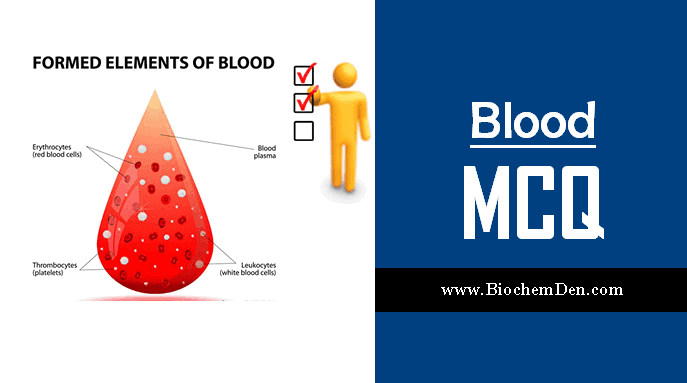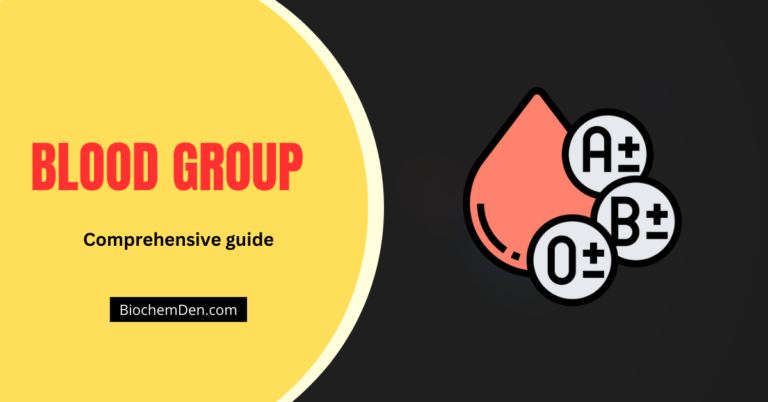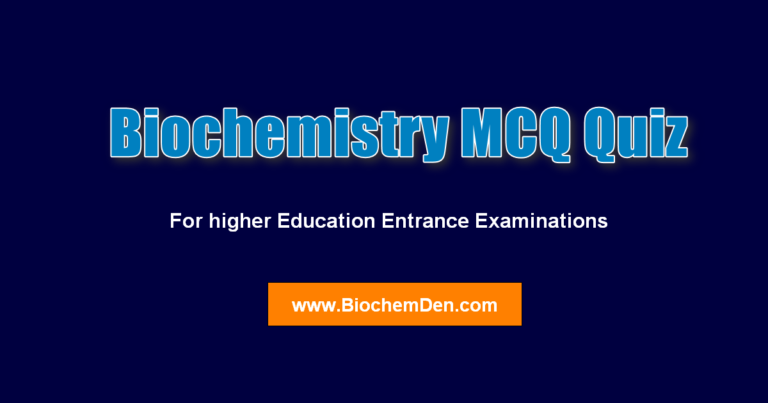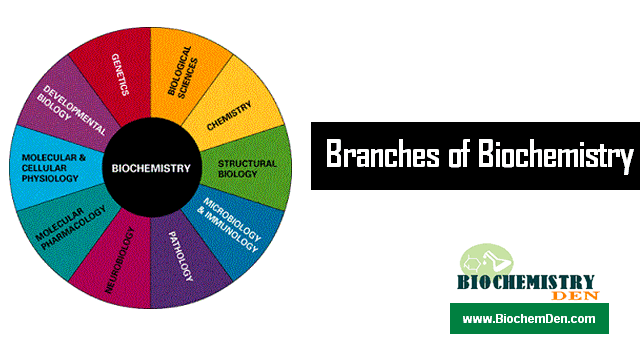
Welcome to Biochemistry MCQ (Multiple Choice Questions) examinations zone. These questions are designed based on the Topic “Composition of Blood”.
Recently I have posted one article on Composition of Blood and Biochemistry video lecture also.
Before going to start this test please verify my previous biochemistry study materials in this blog.
Start Blood MCQ Online Examination
These MCQ’s are a product of umpteen discussions and analytical thought in multiple academic sessions. No endeavour is complete without teamwork. The database always keep growing and refining as many additions, corrections continually made. Wishing you all the best. Multiple-choice Questions layout. Just Enter your Name and Start the exam on Blood MCQ one by one and get the score.
1. The normal specific gravity of Blood plasma is found in the range
A 1-2
B. 1.025 to 1.035
C 1.21 to 1.35
D 1.1 to 1.2
2. The normal plasma protein level varies in the range
A 5 to 7 g/100ml
B. 6.5 to 8.0g/100ml
C 7.5g to 8.5 g/100ml
D 3.2 to 5.8 g / 100ml
3. The normal albumin/globulin ratio in plasma varies in the range
A. 1.2/1 to 1.4/1
B 1.4/1 to 1.6/1
C 1 to 2
D 1/1.2 to 1/1.4
4. Ig.G (K-type) contains
A two gamma and two lambda chains
B two delta and two kappa chains
C. two gamma and two kappa chains
D two gamma and two delta chains
5. Ig.M (L-type) contains
A two gamma and two lambda chains
B two gamma and two Mu chains
C. two Mu and two lambda chains
D two Mu and two kappa chains
6. Plasma is
A. light yellow transparent alkaline fluid
B. light red transparent alkaline fluid
C. light yellow transparent acidic fluid
D. light red transparent acidic fluid
7. The life span of RBC is about
A. 100 days
B. 110 days
C. 120 days
D. 130 days
8. The kidney-shaped cells in WBC
A. Monocytes
B. Lymphocytes
C. Neutrophils
D. Eosinophils
9. Formation of RBCs and WBCs is together termed as …
A. Erythropoiesis
B. Haemopoiesis
C. Osteoporosis
D. All the given options are correct
10. The RBC is formed at
A. Bone marrow
B. Thymus
C. Heart
D. Kidney
11. Hemoglobin is a
A. Simple Protein
B. Conjugated Chromoprotein
C. Derived proteins
D. Flexible protein
12. Life of RBC is determined by
A. Isotonic method
B. Hypertonic method
C. Hypotonic method
D. Acidic method
13. How the RBCs are counting
A. Barometer
B. Hemocytometer
C. Blood counter
D. Thermocycler
14. Each molecule of Hemoglobin has _ ferrous atoms
A. Two
B. Three
C. Four
D. Eight
15. Precursor molecules for heme molecule synthesis is
A. Glucose and Glycine
B. Glycine and Succinate
C. Glutamic acid and Succinate
D. Alanine and Glycerine





